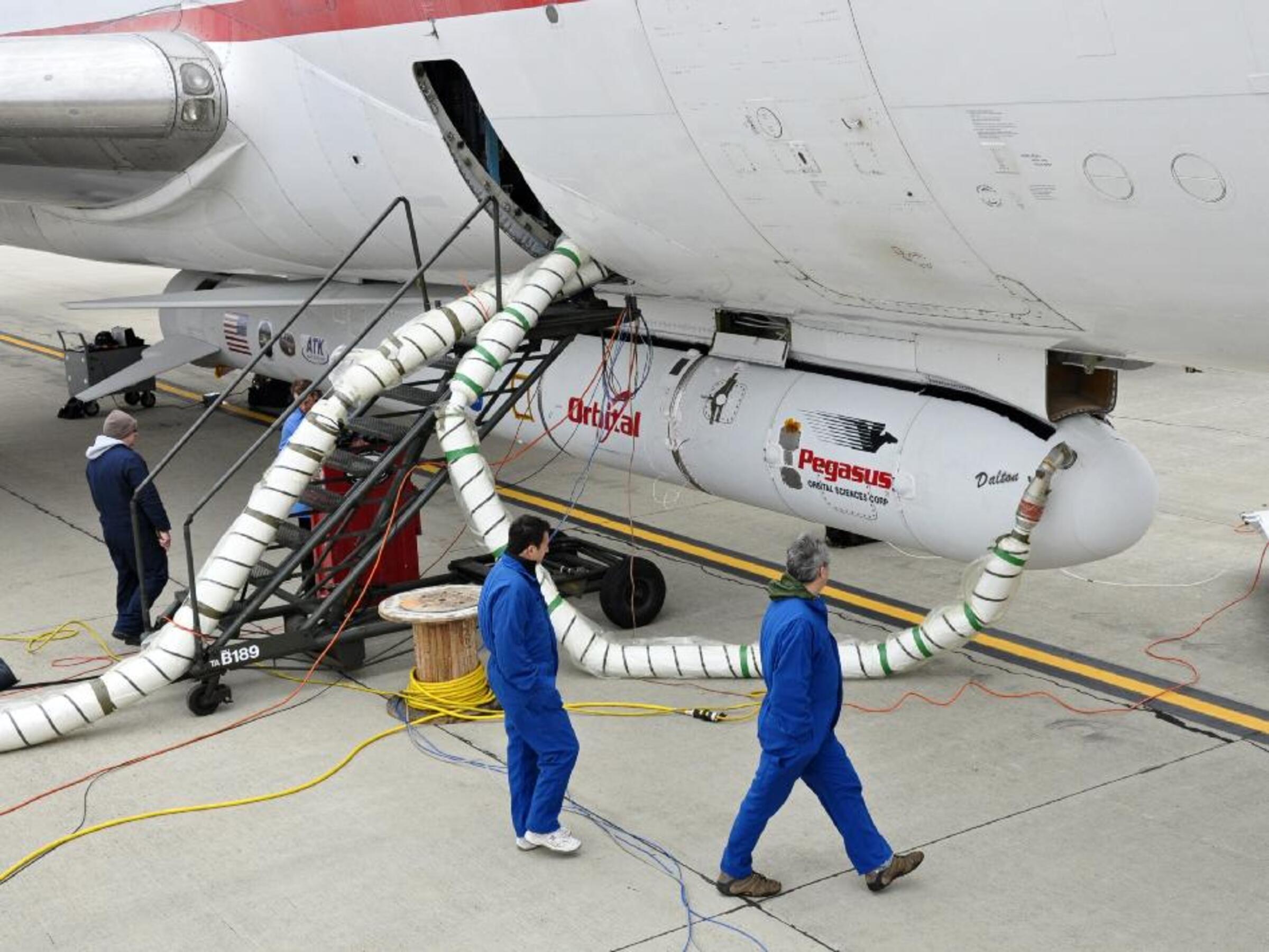

NASA's Nuclear Spectroscopic Telescope Array, or NuSTAR, is now perched atop its Pegasus XL rocket, strapped to the plane that will carry the mission to an airborne launch. Launch is scheduled for June 13, no earlier than 8:30 a.m. PDT (11:30 a.m. EDT).
The plane -- the L-1011 "Stargazer" aircraft -- is now at Vandenberg Air Force Base in central California. It is scheduled to fly to Kwajalein Atoll in the central Pacific Ocean from June 5 to 6. About an hour before launch, the plane will lift off from the island, and drop NuSTAR and its rocket over the ocean. The rocket will then ignite, carrying NuSTAR to its final orbit around Earth's equator.
NuSTAR will be the first space telescope to create sharp images of X-rays with high energies, similar to those used by doctors and dentists. It will conduct a census for black holes, map radioactive material in young supernovae remnants, and study the origins of cosmic rays and extreme physics around collapsed stars.
NuSTAR is a Small Explorer mission led by the California Institute of Technology in Pasadena and managed by NASA's Jet Propulsion Laboratory, also in Pasadena, for NASA's Science Mission Directorate in Washington. The spacecraft was built by Orbital Sciences Corporation, Dulles, Va. Its instrument was built by a consortium including Caltech; JPL; the University of California, Berkeley; Columbia University, New York; NASA's Goddard Space Flight Center, Greenbelt, Md.; the Danish Technical University in Denmark; Lawrence Livermore National Laboratory, Livermore, Calif.; and ATK Aerospace Systems, Goleta, Calif. NuSTAR will be operated by UC Berkeley, with the Italian Space Agency providing its equatorial ground station located at Malindi, Kenya. The mission's outreach program is based at Sonoma State University, Rohnert Park, Calif. NASA's Explorer Program is managed by Goddard. JPL is managed by Caltech for NASA.
Launch management and government oversight for the mission is the responsibility of NASA's Launch Services Program at the Kennedy Space Center in Florida.